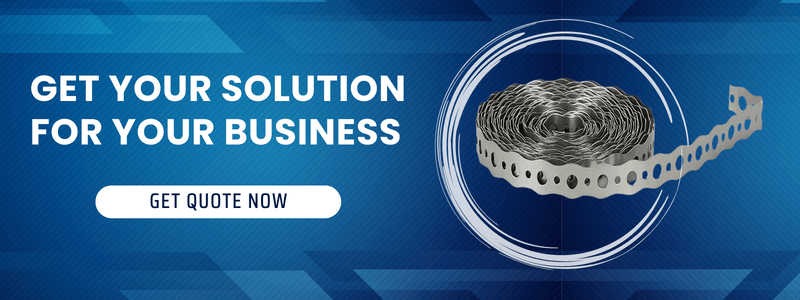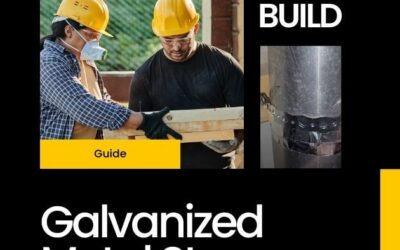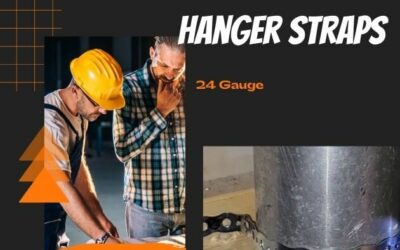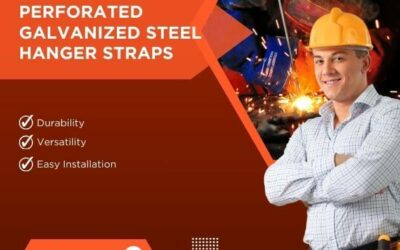Perforated steel straps, also known as steel banding with holes or punched steel strips, are an innovative type of strapping material made from high-quality steel. Unlike regular steel straps, perforated steel straps contain evenly spaced holes punched throughout the length of the material. These perforations provide various advantages that make perforated straps an ideal choice for many applications.
In this article, we’ll take an in-depth look at perforated steel straps to understand what they are, how they are made, their key properties, and the many benefits they offer over regular steel straps.
What are Perforated Steel Straps?
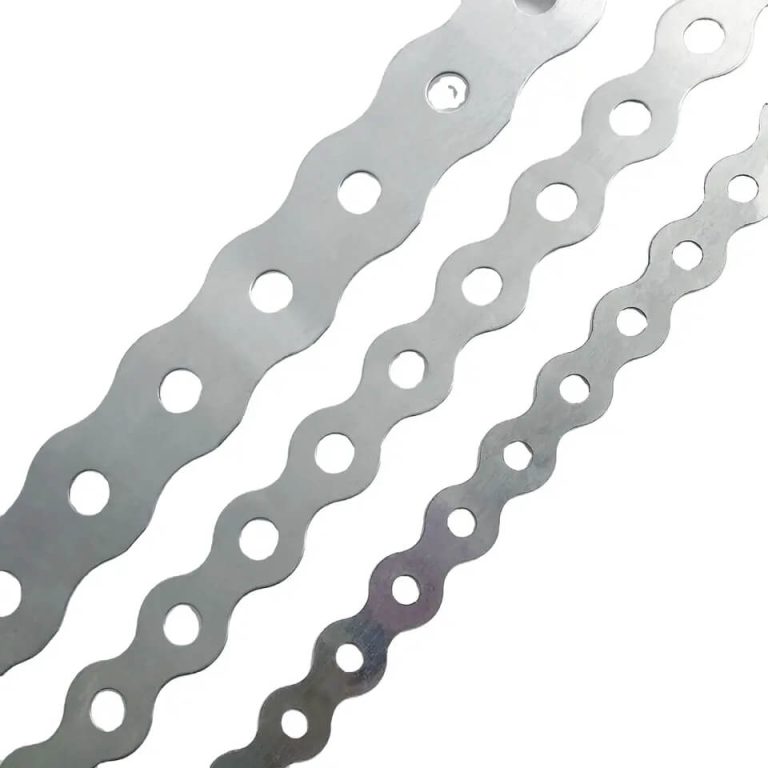
Perforated steel straps are flattened strips of mild steel that have been mechanically punched with consistent holes across the length of the material. They are made from hot-rolled steel strip that is cold-rolled to achieve an optimal finish and temper.
During manufacturing, the desired size and thickness of the steel strip is cold-rolled to achieve a smooth, uniform finish. Next, punching machines outfitted with hardened precision punches mechanically punch holes in the steel at fixed intervals across the length and width of the strap.
The size, shape and spacing of the holes can be customized as per application requirements. The most common hole size is 1/2 inch, spaced 2 inches apart. However, smaller and larger hole sizes are also available to suit different needs.
The perforating process imparts additional flexibility to the steel strap while retaining its inherent high tensile strength. The finished perforated steel straps are then wound in coils or supplied in straight lengths and made available in a range of widths and thicknesses.
Key Properties of Perforated Steel Straps
Perforated steel straps offer some unique properties that make them advantageous for many functions:
- High tensile strength – They retain the strength of steel despite the perforations and can withstand tremendous amounts of tension and strain.
- Flexibility – The holes add flexibility while limiting stretch, allowing the straps to flex and bend more easily.
- Lightweight – Weighs less than solid steel straps due to the punched holes.
- Air circulation – The perforations allow airflow which prevents moisture collection and corrosion.
- Binding capacity – Provides strong and effective binding despite the holes.
- Reusability – Can be reused several times if undamaged.
- Customizable – Hole size and spacing can be customized for different needs.
Benefits of Using Perforated Steel Straps
Perforated steel straps provide numerous advantages that make them the preferred choice over regular steel strapping for many functions:
Better Gripping and Friction
The punched holes allow the straps to grip surfaces better. When wrapped around an object, the perforations prevent slippage and sliding by providing multi-point gripping across the surface. This improves friction and holding power.
Easier to Apply and Remove
The combination of strength and flexibility allows for easier strap tensioning and tighter binding with less effort. Workers can apply the straps faster by hand without requiring special tools. Removing perforated straps is also easier due to the flexibility.
Adaptable and Versatile
The range of available lengths, widths and thicknesses along with customizable hole sizes allow perforated steel straps to be tailored for vastly different applications. The same product can bind items as small as wires or cables and as large as heavy industrial equipment.
Resistance to Corrosion and Rust
The punched holes allow air circulation which prevents moisture accumulation on the surface of the straps. This minimizes the risk of corrosion and rust over prolonged use, even in wet environments. The straps retain their strength and appearance for longer.
Safer Handling
The flexibility of the straps makes them less likely to injure workers during handling. Their lighter weight also reduces fatigue from repeated application and removal. The decreased risk of cuts and scratches makes them safer to use.
Enhanced Shock and Vibration Resistance
The dampening effect of the perforations allows perforated steel straps to absorb shocks and vibrations better than solid straps. This prevents damage and displacement of the strapped items during transport and storage in turbulent conditions.
Cost-Effective
Perforated steel straps provide substantial savings compared to other flexible strapping options. They cost considerably less than chains, plastic straps or fabric straps with comparable strength and durability. Their reusability provides additional cost savings from repeated use.
Uses and Applications of Perforated Steel Straps
Thanks to their well-rounded properties, perforated steel straps have become ubiquitous across various industries. Some notable uses include:
- Binding and securing heavy loads on trucks, trains and ships during transit
- Bundling awkward loads like pipes, cylinders, drums, coiled wires etc.
- Providing flexible connections between equipment parts susceptible to vibration
- Clamping items for construction, outdoor maintenance, and other applications
- Securing loose loads on flatbed trailers and rail cars carrying cargo
- Holding scaffolding and shoring structures in place at construction sites
- Restraining stacked items like bricks, blocks, crates and products in warehouses
- Hanging or mounting cable trays, cable bundles, HVAC ducts and plumbing pipes
- Binding compressed cardboard and paper bales in recycling facilities
- Attaching components on agricultural and farming equipment
In most applications, perforated steel straps are applied manually and tensioned using standard sealless steel buckles. Automatic tensioning and sealing tools are available for high-volume commercial users.
Choosing the Right Perforated Steel Strap
With perforated steel straps available in different dimensions, hole sizes and metal gauges, it is important to choose the right product based on your specific application needs:
- Consider the size and weight of the items being bound and opt for wider, thicker straps for heavier loads.
- The width of the straps should be adequate to allow safe handling without sharp edges cutting into hands.
- Select straps with appropriate hole size based on the degree of flexibility desired.
- Verify that the steel gauge provides sufficient tensile strength to securely bind items during transit and use.
- For shock/vibration-prone loads, choose thinner gauge straps which flex better and absorb more shock.
- Match the strap length to the circumference of the items being bound to avoid waste.
- Evaluate reusability needs to determine if a more durable and thicker grade of steel is required.
- Consider corrosion resistance requirements of the working environment.
Conclusion
Perforated steel straps provide an optimal balance of strength, flexibility, gripping ability and durability for binding, fastening and securing a wide range of items across many industries. The key takeaways are:
- The perforations add flexibility and grip while retaining inherent steel strength.
- They are highly adaptable and outperform regular steel straps for many functions.
- Perforated straps are safer, more rust resistant and cost-effective.
- They are easy to apply manually but can also be used with automated tools.
- Choosing the right dimensions and properties ensures ideal performance.
So next time you need heavy-duty strapping, perforated steel straps are worth considering for their performance and economic benefits. They provide robust and reliable securing for almost any application.
Frequently Asked Questions
What size perforations are typical in perforated steel straps?
Most common are 1/2 inch holes spaced 2 inches apart center-to-center. But smaller 3/8 inch holes or larger 5/8 inch holes spaced 1 to 4 inches apart are also available.
Are perforated straps as strong as regular steel straps?
Yes, despite the holes punched throughout their length, perforated straps retain the full tensile strength of steel. The gaps are precisely controlled to avoid strength loss.
Can you use automatic strapping tools with perforated steel straps?
Yes, most standard pneumatic and battery powered strapping tools are compatible with perforated straps in appropriate widths. Automatic tensioning ensures optimum tightness.
What is the recommended gauge thickness for perforated steel straps?
For heavy loads, 3/4″ wide x .035″ thick straps are ideal. 5/8″ x .023″ works for many purposes. And 1/2″ x .015″ suits lighter duty requirements. Custom gauges are also available.
Is surface corrosion or rusting a concern with perforated steel straps?
No, the holes allow air circulation, minimizing moisture accumulation. And stainless steel variants resist corrosion in wet environments. Proper storage also reduces corrosion.
How do perforated steel straps compare to other flexible strapping options?
Perforated steel offers greater strength than plastic straps and better economy than fabric straps. Perforated steel also has higher working load limits than chains of the same weight.
What special precautions should be taken when handling perforated straps?
The strap edges may be sharp so wearing thick gloves is recommended. Straps under tension should not be cut but properly released. Excess strap ends should be trimmed for safety.
How are perforated steel straps installed and tensioned?
They are wrapped manually around the items and pulled tight. The strap end inserts through a steel seal-less buckle which cinches the strap when crimped with a tool.
Can perforated straps be reused if undamaged?
Yes, as long as they are not torn or abraded, sound perforated straps can be reused several times by recovering and reapplying them with standard buckles and tools.
Are there any industry standards for perforated steel strapping products?
Yes, ASTM D3953 covers materials, properties, manufacturing and testing standards for perforated steel strapping. Reputable suppliers comply with these standards.
How should perforated steel straps be stored between uses?
They should be kept indoors in a clean, cool, dry place away from moisture to prevent corrosion. Straps should be coiled or suspended to allow air circulation.
Secure Your Pipes with Galvanized Metal Straps: A Comprehensive Guide
Ensuring Pipe Stability and Longevity In the world of construction and plumbing, maintaining the structural integrity of piping systems is paramount. Galvanized metal pipe straps emerge as the unsung heroes, providing unwavering support and security to these vital...
Mastering 24 Gauge Galvanized Pipe Hanger Straps: A Useful Guide
In the realm of plumbing and construction, where every detail matters, securing pipes effectively is paramount. Enter the 24 gauge galvanized pipe hanger strap – a reliable and versatile solution trusted by both professionals and DIY enthusiasts alike. Understanding...
Perforated Metal Hanger Straps: Installation, Benefits, and Maintenance
Are you tired of dealing with sagging ductwork or unsupported pipes in your home or commercial building? Proper support is crucial for maintaining the integrity and efficiency of your HVAC and plumbing systems. That's where perforated metal hanger straps come into...

Justin Wong
Hi, I’m Justin, the technical engineer of Jiangmen Masters. We’ve been running a factory in China that makes metal hanger strap for 16 years now, and the purpose of this article is to share the knowledge related to metal hanger strap from a Chinese supplier’s perspective.

